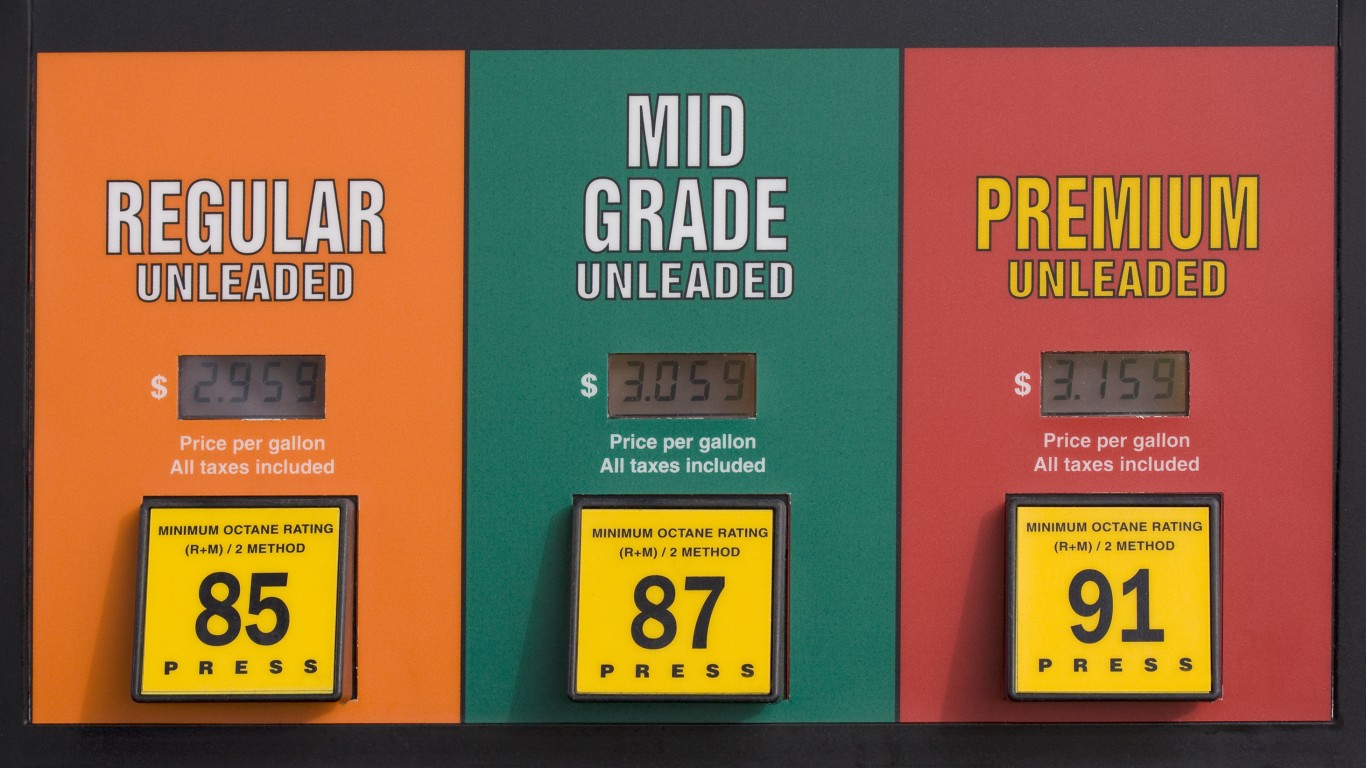
Total gasoline inventories decreased by 4 million barrels last week and remain in the middle of the five-year average range. Total motor gasoline supplied (the EIA’s measure of consumption) averaged 8.8 million barrels a day for the past four weeks, down by 0.5% compared with the same period a year ago.
Distillate inventories decreased by 1.5 million barrels last week and remain in the lower half of the average range. Distillate product supplied averaged about 3.8 million barrels a day over the past four weeks, up by 0.7% when compared with the same period last year. Distillate production averaged 4.6 million barrels a day last week, down 100,000 barrels a day from the prior week’s production.
Wednesday evening, the American Petroleum Institute (API) reported that crude inventories rose by 10.2 million barrels in the week ending October 10, together with a decline of 3.1 million barrels in gasoline supplies and a decline of 200,000 barrels in distillate supplies. For the same period, analysts had estimated an increase of 2.2 million barrels in crude inventories, a drop of 1.4 million barrels in the gasoline supply and a decline of 1.7 million barrels in distillate inventories.
ALSO READ: The 10 Most Oil-Rich States
Before the EIA report, West Texas Intermediate (WTI) crude was trading down about 0.4% at around $80.65 a barrel, after posting a new 52-week low of $79.10 earlier Thursday morning. The WTI price slipped further to around $80.20 immediately after the report was released.
For the past week, crude imports averaged over 7.7 million barrels a day, up about 28,000 barrels a day compared with the previous week. Refineries were running at 88.1% of capacity, with daily input of about 15.3 million barrels a day, about 300,000 barrels a day below the previous week’s average.
WTI crude prices have tumbled more than $5 a barrel since last week. Refinery throughput has dropped for a third straight week and pump prices continue to fall with diminishing consumer demand. The large inventory increase was not unexpected, so the price did not take as big a hit as it might have.
According to AAA, the current national average pump price per gallon of regular gasoline is $3.163, down from $3.254 a week ago and from $3.381 a month ago. Last year a gallon of regular cost $3.357 on average in the United States.
Here is a look at how share prices at three U.S. producers reacted to this latest report.
Exxon Mobil Corp. (NYSE: XOM) traded down about 0.2%, at $90.04 in a 52-week range of $86.84 to $104.76.
Chevron Corp. (NYSE: CVX) traded up about 0.2%, at $109.49 in a 52-week range of $106.65 to $135.10.
Continental Resources Inc. (NYSE: CLR) traded up about 0.8% to $54.29. The stock’s 52-week range is $50.13 to $80.91. Continental is the largest producer in the Bakken shale play.
ALSO READ: Natural Gas Inventory Increase Weighs on Price
100 Million Americans Are Missing This Crucial Retirement Tool
The thought of burdening your family with a financial disaster is most Americans’ nightmare. However, recent studies show that over 100 million Americans still don’t have proper life insurance in the event they pass away.
Life insurance can bring peace of mind – ensuring your loved ones are safeguarded against unforeseen expenses and debts. With premiums often lower than expected and a variety of plans tailored to different life stages and health conditions, securing a policy is more accessible than ever.
A quick, no-obligation quote can provide valuable insight into what’s available and what might best suit your family’s needs. Life insurance is a simple step you can take today to help secure peace of mind for your loved ones tomorrow.
Click here to learn how to get a quote in just a few minutes.
Thank you for reading! Have some feedback for us?
Contact the 24/7 Wall St. editorial team.




